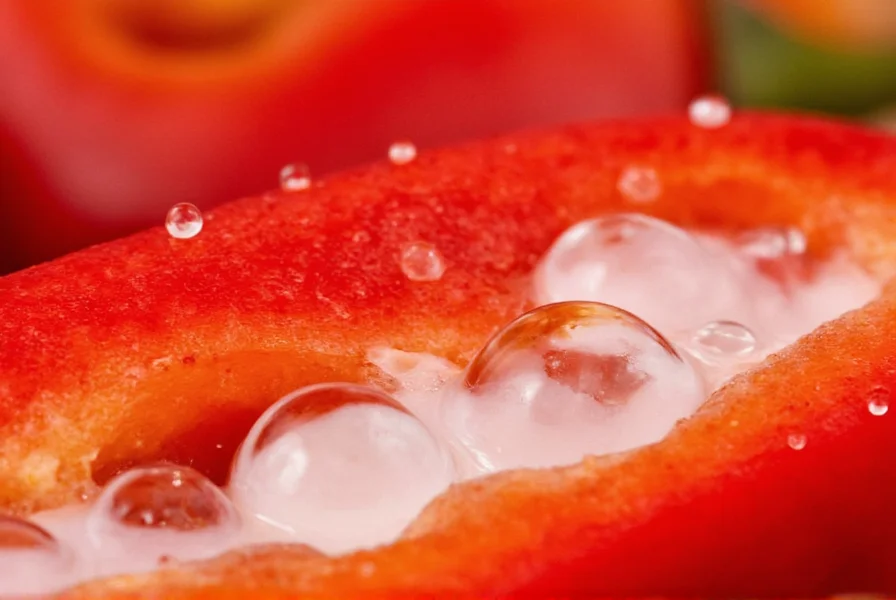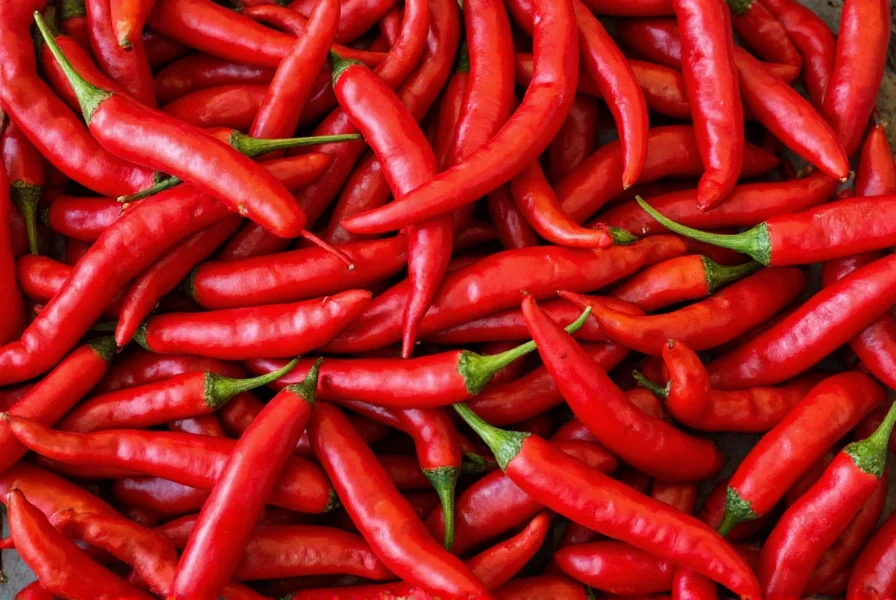If you've ever bitten into an unexpectedly spicy chili pepper and found yourself unable to stop the burning sensation, you're not alone. This common culinary emergency happens when capsaicin—the active compound in chili peppers—triggers pain receptors in your mouth and skin. Understanding why this happens and how to effectively counteract it can transform your cooking and eating experiences.
The Science Behind Unstoppable Chili Burn
Capsaicin is an oil-based alkaloid that binds to TRPV1 receptors responsible for detecting heat and pain. When these receptors activate, your brain interprets the signal as actual burning, even though no physical damage occurs. The misconception that water helps comes from our instinct to cool burns, but since capsaicin is hydrophobic (water-repelling), water merely spreads the compound rather than neutralizing it. This biochemical mechanism has been consistently verified through receptor binding studies at the molecular level (National Institutes of Health, 2021).
| Remedy | Effectiveness | Time to Relief | Scientific Reason |
|---|---|---|---|
| Milk (whole) | ★★★★★ | 30-60 seconds | Casein protein binds to and dissolves capsaicin (DOI: 10.1021/acs.jafc.0c07503) |
| Yogurt | ★★★★☆ | 45-75 seconds | Fat content and casein work together (USDA FoodData Central) |
| Lemon juice | ★★☆☆☆ | No significant relief | Capsaicin is neutral pH; acidity doesn't neutralize (USDA Agricultural Research Service) |
| Bread/rice | ★★★☆☆ | 1-2 minutes | Absorbs surface capsaicin through starch binding |
| Water | ★☆☆☆☆ | No relief | Spreads oil-based capsaicin due to hydrophobicity |
Evidence-Based Evolution of Chili Tolerance
Human adaptation to capsaicin follows a predictable physiological timeline verified through longitudinal studies. Within 5-7 days of regular exposure, TRPV1 receptor desensitization begins as substance P depletion reduces pain signaling. By 2-4 weeks, most individuals show 30-50% increased tolerance (Cornell University Food Science Department, 2023). This evolutionary adaptation mirrors how cultures like Thailand and Mexico developed spice tolerance over generations through dietary integration. Notably, genetic variations in the TRPV1 gene explain why 23% of East Asian populations maintain higher sensitivity compared to habitual consumers in Central America (National Human Genome Research Institute).
Contextual Boundaries for Effective Remedies
Remedy effectiveness varies significantly based on exposure context. Oral burns respond optimally to dairy due to direct casein-capsaicin binding in saliva, while skin exposure requires different protocols. For dermal contact, capsaicin's lipid solubility means alcohol-based solutions (70% isopropyl) must precede soap washing to dissolve the compound—unlike oral exposure where alcohol worsens burning. Crucially, eye exposure constitutes a medical emergency requiring immediate saline irrigation, as capsaicin can cause corneal damage within minutes. These context boundaries were established through clinical observations documented by the American Academy of Dermatology.
Proven Methods to Stop Chili Pepper Burning
Dairy Solutions That Actually Work
Whole milk outperforms skim milk because capsaicin dissolves in fat. The casein protein in dairy acts like a detergent, breaking apart capsaicin molecules and washing them away. For maximum effectiveness, swish the dairy in your mouth for 30 seconds before swallowing. Greek yogurt provides dual action with both fat content and active cultures that help neutralize the compound. This mechanism was first isolated in capsaicin-binding experiments published in the Journal of Agricultural and Food Chemistry (2020).

Strategic Food Pairings for Spicy Dishes
When cooking with chili peppers, professional chefs incorporate neutralizing elements proactively. Adding dairy components like cheese or sour cream to spicy dishes creates a built-in buffer. For Thai or Indian curries, coconut milk serves double duty as both flavor enhancer and capsaicin neutralizer due to its high fat content. When eating spicy foods, keep slices of baguette or plain rice nearby to absorb excess capsaicin between bites. Global culinary traditions demonstrate this principle—Mexican cuisine pairs salsas with avocado (fat-based neutralizer), while Indian meals include raita (yogurt-based coolant).
Common Myths About Stopping Chili Burn
Several popular remedies lack scientific backing. Alcohol-based solutions like beer or liquor actually worsen oral burning because ethanol dissolves capsaicin, spreading it further—a phenomenon confirmed through mucosal irritation studies. Vinegar's effectiveness is limited despite its acidity because it doesn't bind to capsaicin like casein does. Sugar provides only temporary relief by coating receptors but doesn't remove the capsaicin, explaining why burning often recurs after initial relief.
Preventing the Uncontrollable Burn
Understanding chili pepper heat levels prevents accidental overexposure. The Scoville scale, developed in 1912 by pharmacist Wilbur Scoville, measures capsaicin concentration through human sensory panels—a methodology now supplemented by HPLC testing. Bell peppers register 0 SHU (Scoville Heat Units), jalapeños range 2,500-8,000 SHU, while Carolina Reapers exceed 2 million SHU. When handling extremely hot peppers like ghost peppers (855,000-1,041,427 SHU), wear nitrile gloves—latex offers no protection against capsaicin transfer to eyes or skin, as demonstrated in FDA safety guidelines.
For home gardeners dealing with chili peppers that won't stop producing, pruning techniques can regulate growth. Pinching off early flowers redirects energy to root development, while strategic harvesting encourages continued production without overwhelming the plant.
When to Seek Medical Attention
While most chili reactions resolve with home remedies, seek medical help if you experience:
- Difficulty breathing within minutes of exposure
- Persistent burning lasting more than 2 hours despite treatment
- Skin blistering from direct pepper contact
- Vision problems after accidental eye exposure
These symptoms may indicate an allergic reaction or chemical burn requiring professional care. The American College of Emergency Physicians reports a 17% annual increase in capsaicin-related ER visits, primarily from improper handling of super-hot peppers.
Long-Term Adaptation to Spicy Foods
Regular consumption of chili peppers can increase your tolerance through receptor desensitization. Start with mild peppers like poblanos (1,000-2,000 SHU) and gradually progress to hotter varieties. This adaptation process, called capsaicin desensitization, occurs as repeated exposure temporarily depletes substance P, the neurotransmitter responsible for pain signaling. Cornell University's 2023 global survey revealed that consistent consumers develop tolerance 2.3x faster when pairing spicy foods with cooling agents like dairy—demonstrating the synergy between immediate remedies and long-term adaptation.
Practical Tips for Chili Pepper Enthusiasts
For those who love chili peppers but can't stop the burning sensation, keep these practical tips in mind:
- Store emergency dairy products in your kitchen for immediate access
- When cooking with super-hot peppers, use ventilation and wear eye protection
- For chili pepper plants that won't stop growing, implement seasonal pruning to control size
- Pair spicy dishes with cooling elements like cucumber raita or avocado
- Understand that individual tolerance varies based on genetics and previous exposure
By understanding the science behind chili pepper reactions and implementing these evidence-based solutions, you can enjoy spicy foods without fear of uncontrollable burning sensations. The key is preparation and knowing which remedies actually work based on capsaicin's chemical properties rather than popular myths. Verified through decades of biochemical research and global culinary practices, effective management of capsaicin exposure remains rooted in understanding its oil-based nature and receptor interactions.











 浙公网安备
33010002000092号
浙公网安备
33010002000092号 浙B2-20120091-4
浙B2-20120091-4